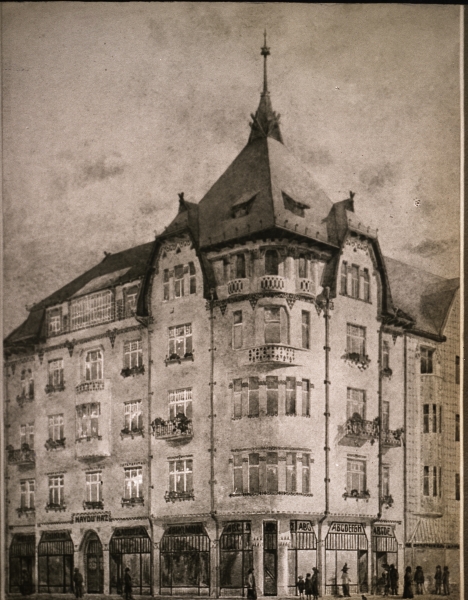The Architect of the Country
The Oeuvre of József Borsos
Text: Zoltán Rácz

Debrecen, Hajdú-örökösök háza, 1911
The landscaped park of the public cemetery and its unique mortuary in Debrecen was completed in 1932 as a most significant work of its architect, József Borsos: it is actually the most beautiful brick architecture in the city, as well as a milestone in Hungarian architecture of that period. Borsos passed his final exams in 1894 in Hódmezővásárhely and graduated as an architect in 1898 from the Royal Hungarian Joseph University of Technology where his professors were Samu Pecz, Imre Steindl and Alajos Hauszmann, amongst others. The architectural manner of this era drew inspiration mainly from the studies of historical styles and their adaptation. In Debrecen he was the first designer with a genuinely local background who primarily had a German-type education but his oeuvre reflects his individual and Hungarian features alike. His knowledge of languages and wide variety of interests earned him extensive journeys – travelling all across Europe and the Americas –, and he did not only make advantage of his experience but was also able to hand them down to others via his lectures and publications. His Hungarian identity remained the main focus of his art. He wished to cultivate Hungarian architecture and returned to Transylvania from time to time for inspiration. He reinterpreted international influences – such as the brick architecture of the north – and adapted them to his Hungarian concepts.





